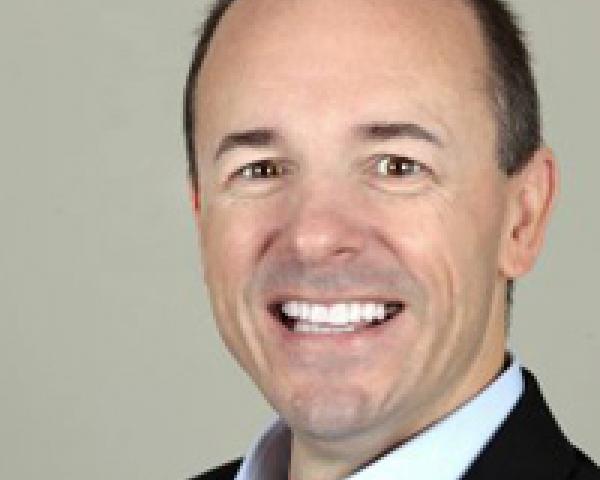Pull up your drink and relax – you're in for a deeper read. Thanks in advance for your eyes and time. Read on ...
Here, I subscribe to the Elon Musk school of applying "first principles" to problem solving. I like to call this one my "Big W." It has the potential to save tens to hundreds of billions of dollars annually, as well as provide solutions for other challenges we have outside of healthcare.
[Note: "Big W" comes from one of my favorite movies - if you know it, feel free to let me know. Chime back. Let's just say a "Big W" is something so obvious many people simply pass right by. Often, value comes from finding and digging deeper.]
https://www.youtube.com/watch?v=r97Nv8N7-mI
OK, let’s get the scary numbers out of the way and frame the situation.
Numbers: According to the latest government statistics, private health insurers, Medicaid and Medicare collectively pay nearly $2.7 trillion annually to doctors, hospitals and other healthcare services. There is $53 trillion in Medicare and Medicaid unfunded liabilities. Mind you, expectations call for these numbers to rise considerably.
Players: On one side, we have services and products, including health insurers, doctors, medical services, hospitals and big pharma. On the other side, we have consumers, which are self- and fully insured companies, private pay citizens and individuals who receive state or government benefits.
Problems: Our healthcare system is for-profit, with publicly owned companies in different sectors, with shareholders, with funds held by current and future retirees and with massive numbers of employed individuals.
So, which companies willingly lower their charges to let customers keep more money to afford growing healthcare costs? Aetna, Merck, HCA? If they do lower their revenues, what happens to their stocks? Do people continue to hold? If not, how does that affect employment in the respective healthcare sectors?
The latest stats show that nearly 35% (78.6 million) of U.S. adults are obese. Obesity leads to heart disease, stroke, type 2 diabetes and certain types of cancer, which together are some of the leading causes of preventable death. About half of all adults – 117 million people – had one or more chronic health conditions. One in four adults had two or more chronic health conditions. Just think about the magnitude of this.
Do you honestly believe Americans are going to change their poor eating and exercise habits en masse and in a reasonably short term? Do you really expect the majority of obese individuals to take action to lose their excessive weight?
The reality is that we have a connected group of self-serving and self-centered individuals, businesses and political leaders, none of whom are willing to make sizable efforts to fix our healthcare system. Add in the massive marketing from food and beverage companies (sodas and alcohol), as well as fast-food restaurants that appeal to a majority of Americans who have little in the way of savings. That all spells a continuing downward spiral for our country's healthcare costs and future affordability.
Enter the Big W
The Big W is the creation of what I call the "transition plan." This starts with the revelation that a mere 6% of Medicare patients who die each year make up an astounding 27% to 30% of all Medicare costs. This accounts for nearly $200 billion in outgoing payments. According to
statistics provided from the Center for American Progress fellow Ezekiel Emanuel and the
latest CMS report on our 2014 national health expenditures (NHE), we add in another $250 billion for end-of-life care on those covered under Medicaid and private insurers. In all, that is nearly a
half-trillion dollars per year, which plays, I believe, a very important role in our healthcare crisis.
The "transition plan" starts with an understanding that those insured individuals who will die in the next 12 months are, in a sad way, a monetary commodity for medical professionals, hospitals, big pharma and medical services/products companies.
Many of these individuals will die with little to no net worth. Since 1989, the proportion of those older than 75 with mortgage debt has quadrupled. Many seniors have large amounts of debt because of high medical bills, long-term care and dwindling retirement savings. In addition, credit card debt for seniors is larger and is rising faster than for the younger generations.
Let's also not forget that many "last year" patients are people who are
not senior citizens. Some come from the nearly 47 million Americans living in poverty or from the working, lower- to middle-income earners. While a portion of this population has life insurance, the industry reports that, of all U.S. adults, only 60% carry any level of coverage at all, and that our country is underinsured for life insurance by nearly $15 trillion.
We've extended life, and that is a noble task, but ask a chronically ill person or even an elderly person what they think about being kept alive for as long as possible. Those who are suffering recognize the importance of dying with dignity, instead of slowly wasting away through a myriad of medical appointments, drugs, therapies, surgeries and lab tests.
Here’s where the transition plan begins. It’s a system where health payers identify terminal patients or those who are highly likely to become terminal patients and willingly choose to forego payment for most related medical services. In return, they receive a guaranteed tax-free, single-windfall payment. The payment constitutes a large portion of what would have been paid out to the medical community.
Take Charles Smith, a 68-year-old man who has been diagnosed with Stage 3B lung cancer. The average case has a 95% chance of death. Let’s estimate that between chemotherapy, radiation, lab tests, doctor visits, home health, costly medications, pulmonary therapy and several possible surgeries, a typical health payer can expect to reimburse between $345,000 and $375,000.
The health payer, ABC Insurance Co., receives the patient’s initial diagnosis on a medical claim. It’s flagged – the case is passed to the company's medical management department. Once substantiated with medical records, the health payers’ actuaries set an estimated value of $350,000 on the case.
Now, the health payer gets in contact with the patient and presents the offer for the transition plan. The letter would state the following:
- That, with the current diagnosis, the payer is offering the opportunity for the beneficiary to participate in the offer.
- That the program is voluntary. If the beneficiary does not choose it, nothing will change with his current health coverage.
- That, if the offer is accepted, the payer will send a one-time, tax-free, non-refundable payment to Mr. Charles Smith for $150,000.
Once the insurer makes the payment, the following would occur:
- The health payer would no longer be responsible for payment for any treatment or services, directly or indirectly related to the chronic condition. All such conditions would be clearly identified in the Transition Plan Agreement.
- The insured could continue to see medical providers and have them bill services to the health payer, so long as such conditions are separate from the main diagnosis and other listed conditions. However, payments for any future medical services billed, in keeping with company policy, must be determined to be medically necessary.
- The insurer would continue to pay, on an as-needed and medically necessary basis, any palliative or "pain management" care associated with the main condition. This would not include hospitalization, therapy, home health or premium-brand medications.
What has just happened is a unique meeting of the minds between poor to middle-class dying Americans and the health insurance industry. In giving insureds the option to be financially compensated, health payers shift payments from the medical establishment back to individuals who are taking clear control of their lives.
In this specific case, corporate or private insureds receive back a large portion of the $200,000 cost savings in the form of reduced premiums, perhaps mandated by government to certain levels based on certain savings points. Naturally, for self-insured entities, the savings would flow back to the company or organization.
Imagine Mr. Smith having less than $5,000 of total savings and no insurance. He is divorced, yet he has two children who are also in the lower income class. While $150,000 of tax-free money is not millions, it could make a difference to that family and perhaps their ability to afford healthcare, a home or even college.
Without the transition plan, Mr. Smith might struggle to pay his remaining debts and have no money left over for funeral expenses. With the transition plan, he might take, or at least send, his two kids and their families on a trip around the world. Perhaps he would choose to contribute to several 529 plans for the education of his grandchildren. He could also choose to give to charities, political groups or churches or even share with his most beloved friends.
The transition plan is the patient's choice. If the patient is mentally unable to make a choice, she may default to the normal relationship with the health insurer, or the decision could shift to her immediate family or appointed surrogate.
Public payers, private health insurers and corporations that pay for their own health benefits will now have the ability to help others make the transition and perhaps leave better legacies. Nothing puts a smile on someone's face, especially in times of stress and depression, quite like when they give and get to see others enjoy their gifts. Contrast this transaction with the same money going into medical and drug house pockets, leading to a continual raise of everyone’s plan premiums and a decrease in savings.
Who are the financial losers here? End-of-life medical services including chemotherapy, radiation, imaging, testing, surgeries, therapies, medical equipment sales and home health services.
The transition plan may not be the entire answer for our growing healthcare crisis and spiraling costs. Certainly, it is not going to be the choice for those who are dying and have plenty of savings to pass on to their loved ones or charity; nor will it be the choice for those who want to fight their diseases to the very end.
However, for a large majority of Americans who don't have the assets to leave but recognize their value per historical healthcare payments to providers, the transition plan could be a useful measure. It would effectively allow them to stake a claim toward money normally ending up in the pockets of medical service professional for cases not often resolving positively.








